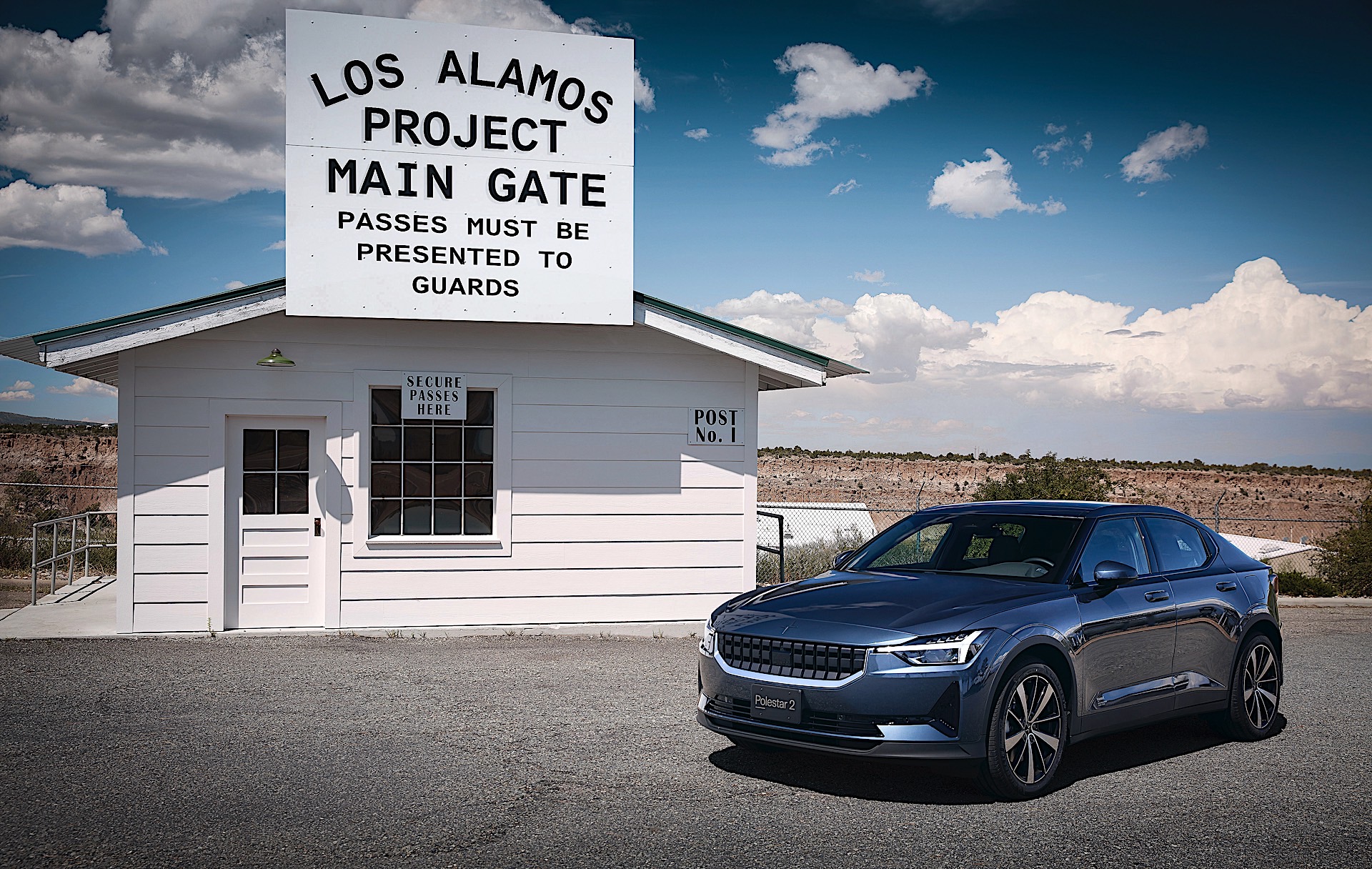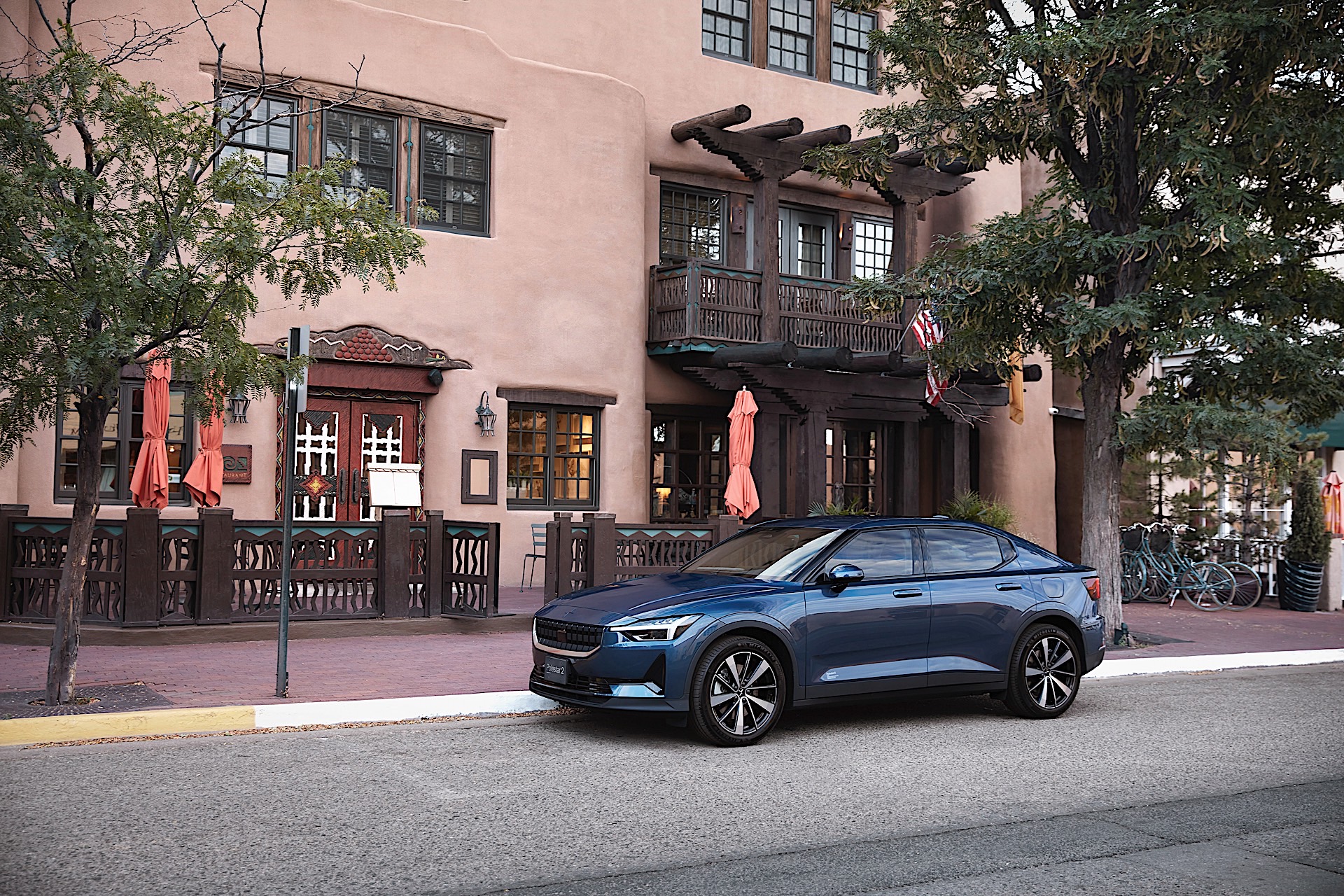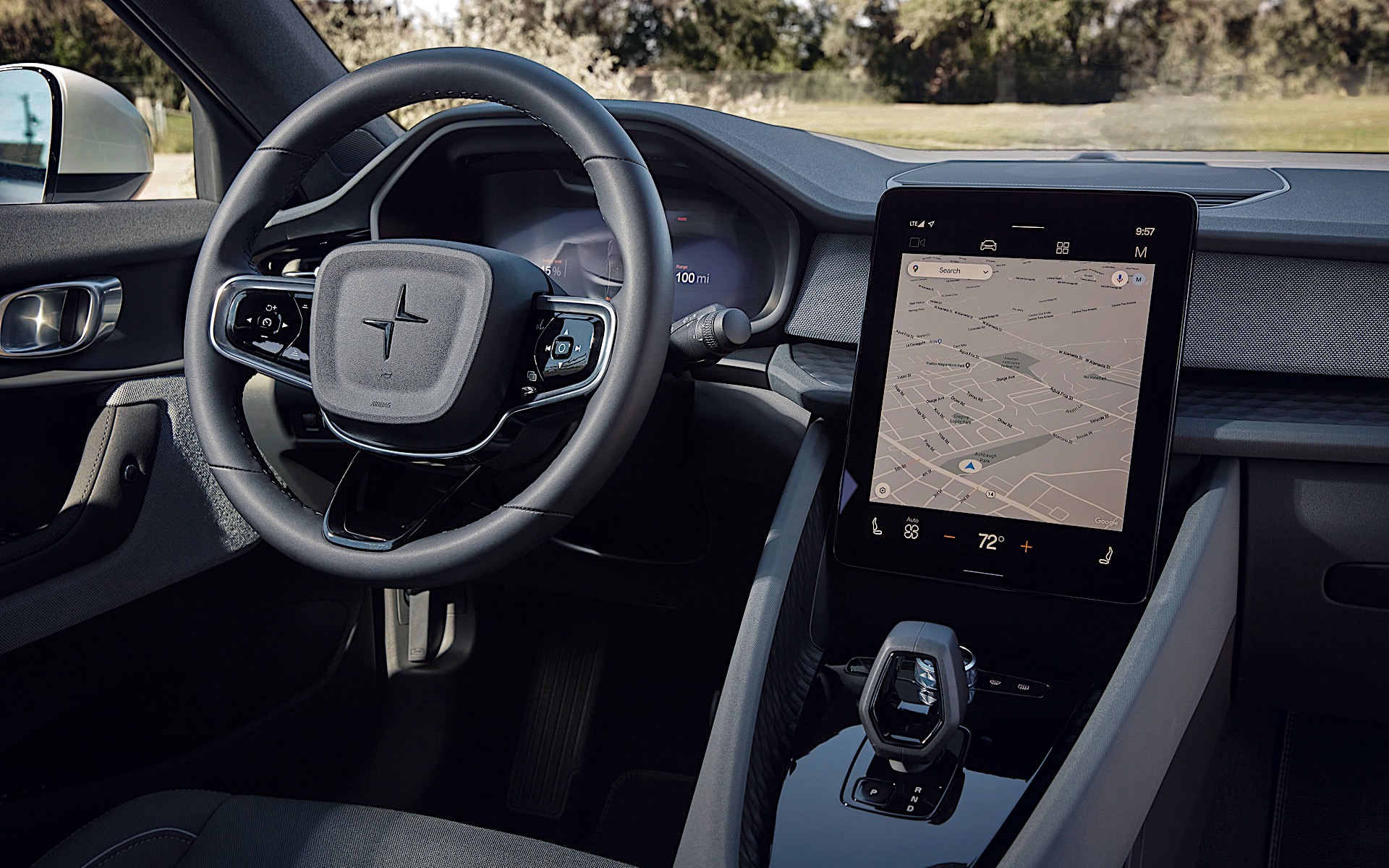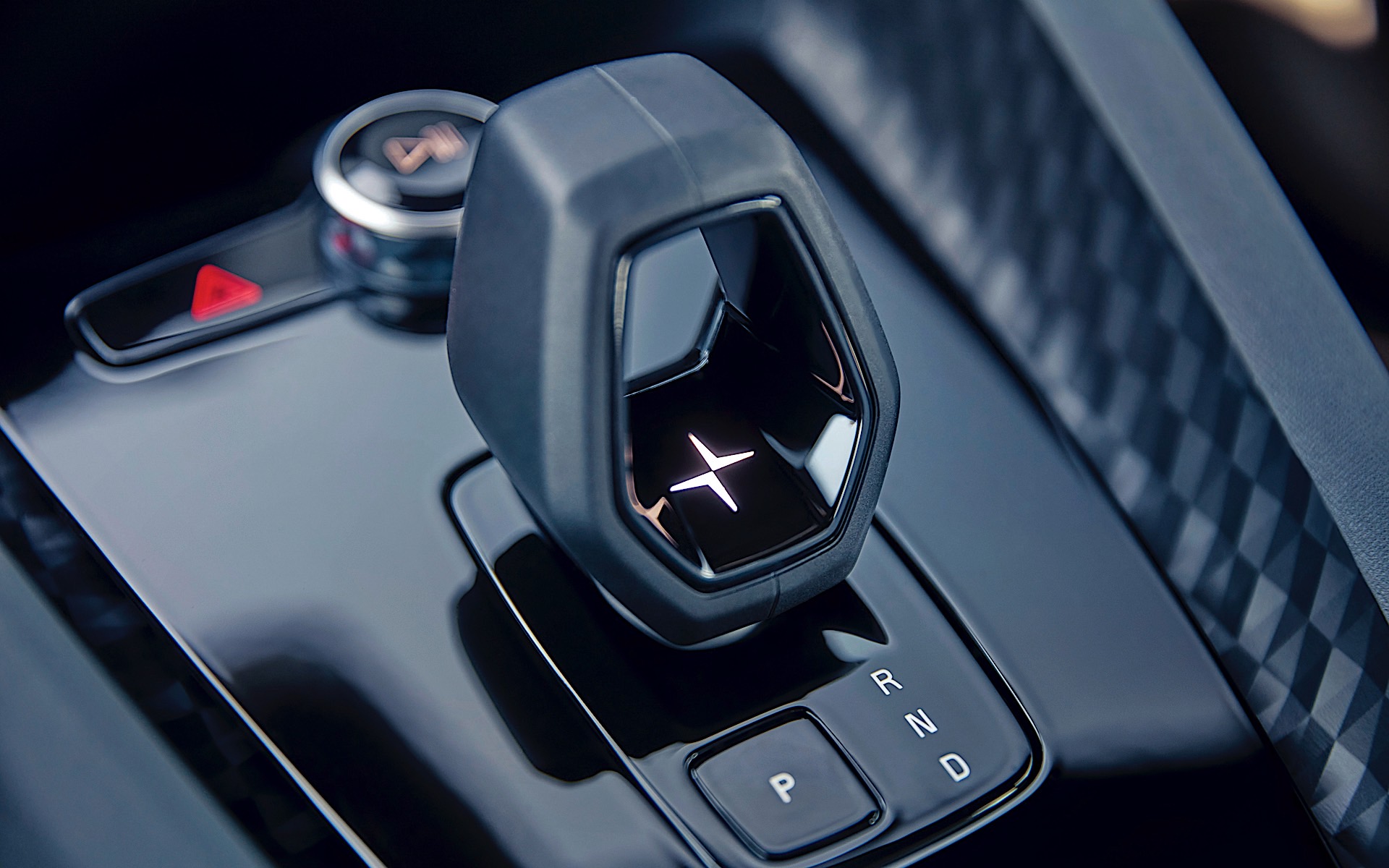If there’s one thing that we learned from Elon Musk and Tesla, it’s that building cars is difficult. So, when a car company that was launched on Oct. 17, 2017 already has two models out on the streets for customers to buy, that’s a pretty incredible feat. What’s more incredible is that the brand’s mainstream model is quite good. That’s what you get from the Polestar brand and its Polestar 2 all-electric sedan.
We’re in Santa Fe, New Mexico to drive the expanded Polestar 2 lineup for 2022. When the company started, it had one flagship car and that was it. The Polestar 2 joined the Polestar 1 shortly after, but it was only available as a top-spec, dual-motor variant with all the options. Automakers launch the most expensive cars first, to help ensure sustainable margins on the new cars.
But for 2022, model variants are here. All new for 2022 is the front-wheel drive, single motor Polestar 2. Additionally, the dual motor variant is broken down into several option packages with a new price.
For this first drive experience, we’re going to focus on the front-wheel drive version. If you want to see more about the dual motor experience, we have a full review right here. Also read on for updated pricing information.
Santa Fe is an interesting place to have a car launch. With our hotel residing at an altitude of 7,000 feet above sea level, gasoline-powered cars tend to not make as much power. Turbocharging helps at altitude, of course, but the less dense air simply makes it hard for an engine — or human — to breathe. Fortunately, these are electric cars and that doesn’t matter.

Santa Fe is also an interesting place to have a car launch thanks to its proximity to the Los Alamos National Lab. Our drive route for the day took us into the town and around the facility, with a stop to get coffee at the home of Hans Bethe, who headed the Theoretical Division at Los Alamos and developed the theory behind the implosion method for detonating a nuclear bomb. His home, situated on Bathtub Row, was right next to J. Robert Oppenheimer’s dormitory.
The juxtaposition is stark between Oppenheimer’s “I am become death, the destroyer of worlds” and electric vehicles that are hopefully going to help save our own world.
Either that, or it was just a cool place to have a driver swap and get a cup of coffee.

But we digress, because the truly impressive aspect of the trip is just how good the base model Polestar 2 is.
The single motor Polestar 2 with a long-range motor is rated for 265 miles of EPA range. It has a starting price of $45,900 before any state or federal tax incentives. If you do qualify to receive the full $7,500 federal credit, that puts the price below the single motor Tesla Model 3 with a few extra miles of EPA range.
Unlike most of the competition, the Polestar 2 single motor’s motor lives up on the front axle. According to Polestar, that decision was made because it’s easier to package all the electronics up front. The company didn’t rule out a rear-drive variant of the Polestar 2, but folks who live in climates where it snows will likely appreciate front-wheel drive over rear-wheel drive.

Acceleration is brisk in the Polestar 2 single motor and feels roughly on par with what our long-term Tesla Model 3 SR+ does. It is easy to exploit gaps in traffic by simply putting your foot down, and the one pedal driving mode will bring the car to a complete stop. Varying levels of regen and steering feel allows the driver to dial in exactly the experience they want while driving.
The biggest take-away though is simply how quiet the Polestar 2 is. Whether it is better sound dampening, tire compound choice, or simple voodoo magic, the Polestar 2 is significantly quieter at highway speeds than the Model 3, and even some other EVs we’ve driven. We drove a completely base-spec version, and it was almost uncanny how quiet it was.
The base interior is also quite nice, with unique textured plastics and eco-friendly seats that are comfortable but still a bit sporty. The fantastic Google Android-based infotainment system comes standard and is a joy to use. Having actual Google Maps in the instrument cluster is a game changer and being able to install apps from the Google Play Store quickly made me forget that the car currently doesn’t support Apple Car Play (though it’ll be added soon via an over-the-air update).
The first optional upgrade is the $4,000 Plus Pack. This includes the heat pump option. The heat pump works like a reverse refrigerator and helps keep the cabin warm more efficiently. Polestar claims a 10% range improvement in cold weather as a result. For those who live in bitterly cold climates, the car still retains a resistive heater even with the heat pump.
Also, the pack includes a full-length panoramic glass roof, WeaveTech vegan upholstery, and interior lighting. A Harman Kardon stereo rounds out the list of upgrades.
For those looking for the additional driver assist features, the $3,200 Pilot Pack is for them. It includes adaptive cruise control, Pilot Assist level 2 ADAS, blind spot monitoring, and a 360-degree surround camera.
Aside from the around-view camera, the Model 3’s standard Autopilot suite covers most of that functionality for the base price. In the future, we’d like to see Pilot Assist included standard.

For performance junkies, the $5,000 Performance Pack is an upgrade to consider. It’s only available on the dual motor long range, though. But it includes 20-inch alloy wheels, Brembo brakes, Continental sport tires, ‘Swedish gold’ aesthetic details, and the incredible Öhlins adjustable suspension dampers.
When it comes to charging, all Polestar 2 models can charge at up to 155 kW from a DCFC with the CCS onboard connector. Google Maps will locate charging points along the drive route automatically, helping to eliminate the anxiety that comes with not knowing where to charge. Upcoming software updates should make the system even more intuitive.
Critics will say that the Polestar 2 is a bit of a parts bin car. The headlights strongly resemble the Thor’s hammer Volvo lights. The steering wheel feels like it’s from an XC40. But Polestar is working hard on its brand identity.
The Polestar 2 feels premium inside, but substantially different from a modern Volvo. Polestar is clearly targeting a tech-centric buyer and even if components are shared the implementation is starkly different.
The upcoming Polestar 3, built in the United States, will feature a design language based on the Polestar Precept concept.
The buying experience is uniquely Polestar, too. Polestar Spaces are starting to appear around the country, and the company will do complementary pickup service up to 150 miles away from a service center. We’re told that remote work is something in the cards, as well.

The Polestar 2 is impressive because it’s the company’s second car. Even in preproduction European-spec, the cars have solid build quality and fantastic sound isolation. Build quality doesn’t seem to matter as much these days when it comes to the largest electric car maker in the world, but it is quite refreshing to drive a car where it is an important part of the process.
The Polestar 2 is great. It’s great in dual-motor trim. It’s great in single-motor trim. It’s great fully loaded and it’s great with no option boxes checked. We’d like to see a few more color options but aside from the that the Polestar 2 is a compelling alternative to what is out there. Heck, one of our writers just ordered one. We think there’s no bigger endorsement than that.
